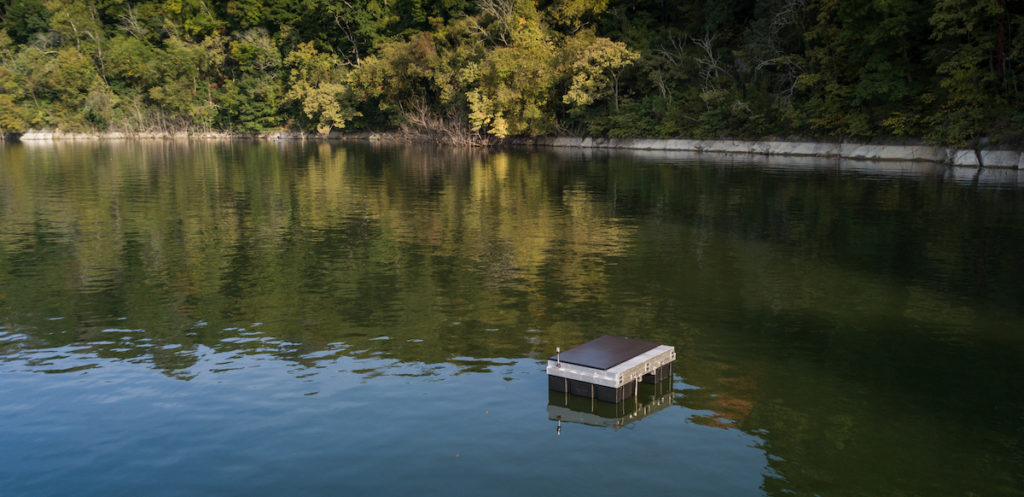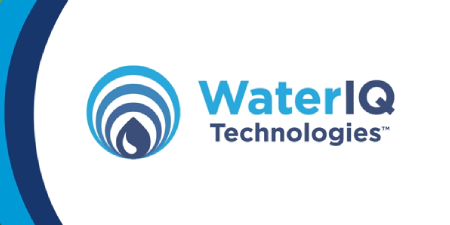Anyone responsible for a water body knows the battle. Whether it’s an irrigation pond, a golf hazard, or a communal lake, keeping it clean is a perpetual struggle and ceaseless chore. Unfortunately, failing to actively ensure a healthy water ecosystem too often results in an algal bloom that looks disgusting, has a horrible stench, and could even be toxic, in fact, quite harmful.
The battle to keep water bodies clean has traditionally required applying one chemical after another, interspersed by a grinding schedule of collecting water samples and inconvenient waits for analysis results.
There’s a better and easier way of keeping ponds and lakes clean. Ultrasound can kill Algae without harm to other forms of life—no dubious chemicals. Water quality data is collected automatically and reported via the internet. Infrequent maintenance of ultrasound equipment is very straightforward, requiring little manual intervention. In the battle against toxic algal blooms, an ultrasound solution is as close to fire-and-forget as possible.
The Scope Of The Problem
The culprit in most toxic blooms is blue-green algae, also known as cyanobacteria. It’s commonly found everywhere and a potential problem for anyone who has to manage a lake or a pond. That could include…
- Home-Owners Associations (HOAs)
- Golf Courses
- Private Estates and Municipalities (parks & recreation departments)
- Farms
- Public Gardens
…and others.
Blue-green algae thrive in warm waters. People in southern locales are already accustomed to testing and conditioning their lakes and ponds all year round. Temperatures are rising all over the world, however, and that’s affecting water temperatures too. The warming climate increases the potential for toxic algal blooms and their severity when the breakout. Meanwhile, people in cooler climates are finding that they have to extend their vigilance beyond the Summer months to include Spring and Fall.
For companies that manage waterways, warming temperatures mean more money, time, and effort spent on chemicals and people to address the increasing issues. Maximizing limited financial and human resources is a compelling reason in and of itself to replace traditional chemical treatments with ultrasound. There are others.
The chemicals used to treat water against algal blooms can be harmful to the surrounding environment. Not only is it problematic to ensure that your staff utilizes the appropriate PPE, but there is also a societal desire to rely on fewer chemicals.
The very process of killing algae with chemicals alone is becoming problematic. This method typically leads to algal decomposition, with the dying algae releasing toxins into the water. Chemical decomposition also creates the opportunity for other bacteria in the water to feed on the dying algae; some of these bacteria then produce unsightly and odorous byproducts. Both results are perhaps counterintuitive but definitely counterproductive.
The Ultrasound Difference
The better way to control toxic algal blooms is ultrasound. It turns out that ultrasound is effective at disrupting the biological functions of blue-green algae. As a result, potential harmful blooms are forestalled. Existing blooms can be mitigated and, over time, reversed. The dying algae harmlessly sink. Nothing else is affected.
Ultrasound works and works safely. The icing on the cake? It’s easy and cost-effective.

The process involves floating an ultrasound unit; a typical approach is to affix the unit to an unobtrusive raft and set it in the water. Apply once, and it just keeps working, dependably and reliably. Units can be equipped with Sharklet™ technology – a specialized film coating that keeps the unit cleaner longer so that it has to be washed off less frequently. All of this with no chemicals, no safety concerns for the people setting the unit afloat, no safety concerns for children, pets, wildlife, or downstream neighbors, and no storage requirements.
The latest generation of ultrasound equipment can emit 2,000 plus distinct frequencies, vastly expanding its performance and utility. Blue-green algae are susceptible to damage from a specific set of frequencies, while entirely different sets of frequencies will damage other strains of algae. Careful tuning leads to better results and a wider range of potential remediation targets.
Each ultrasound unit is configurable with a wide variety of sensors that can measure the proportion of algal contamination, pH levels, turbidity, and other properties indicative of water quality. The data is transmitted wirelessly to the cloud, making it quickly and easily accessible, so water quality managers can continuously monitor water conditions. With automated data collection, there is no need to send people to collect samples, no need for separate testing facilities, or pay for testing and analysis. Instead, facilities managers and grounds crews can focus on other priorities.
WaterIQ Technologies Gets It Done
WaterIQ Technologies supplies ultrasound systems that are the most technologically advanced available. They are effective, especially against blue-green algae, one of the most common causes of toxic algal blooms. They are reliable and durable, built and warrantied to last for years.
The price of the units varies depending on how they are configured, but even fully loaded, customers will see a solid return on investment (ROI). The value is even starker when contrasted with the interminable cost of repeated chemical treatments, plus the cost of labor, plus the cost of storage, plus the intangible costs of using an increasingly unpopular solution.
Anyone responsible for the health and safety of a lake or pond can’t make a more financially and ecologically sound investment.
Water managers can visit www.wateriqtech.com. Or reach out directly to Jordan Meissner, Lakes and Ponds Vice President, WaterIQ Technologies, at jordan@wateriqtech.com or by phoning him at 630-202-0925.
Companies specializing in water management interested in becoming WaterIQ Technologies dealers can contact Jordan for more information.

